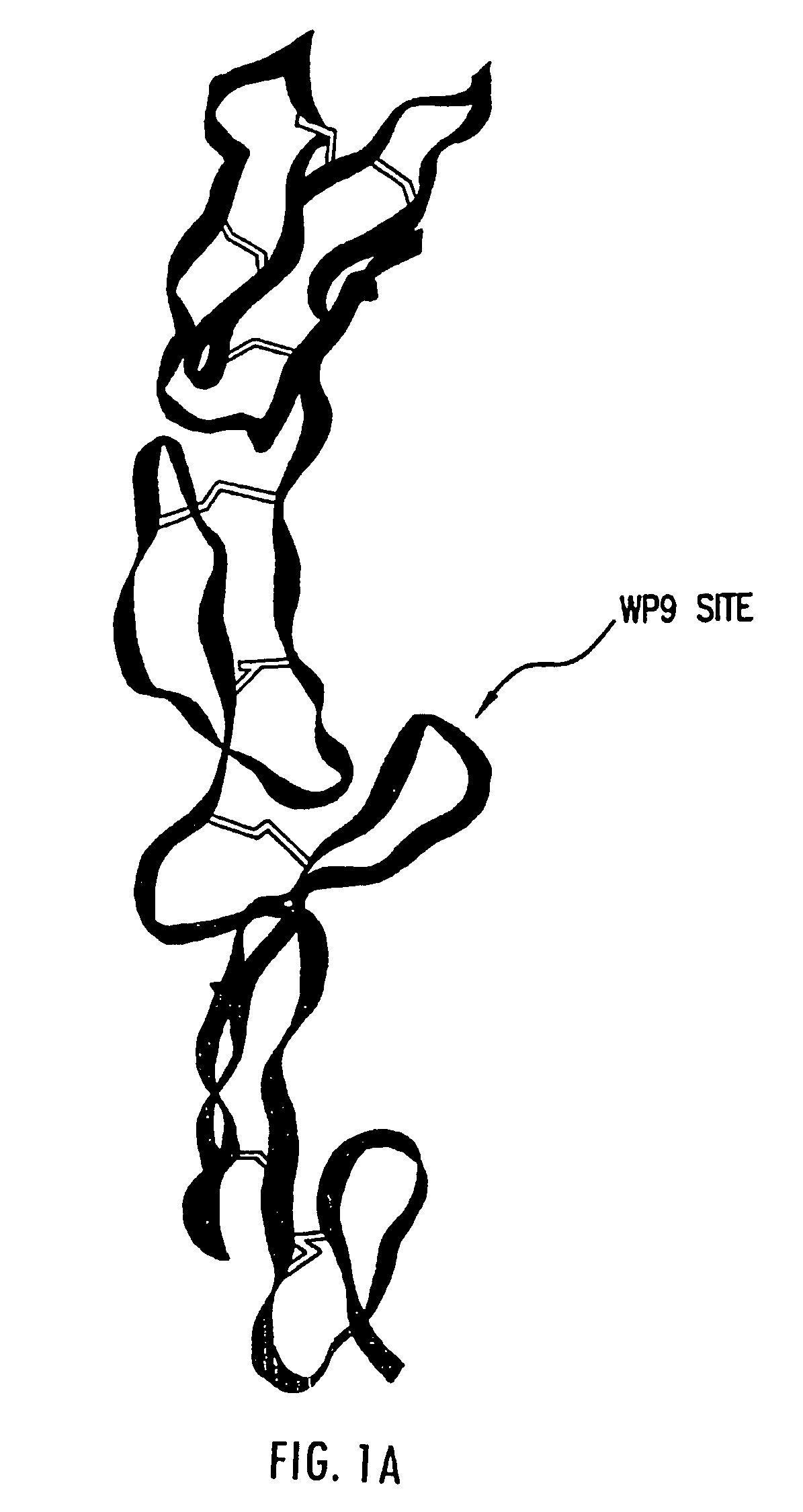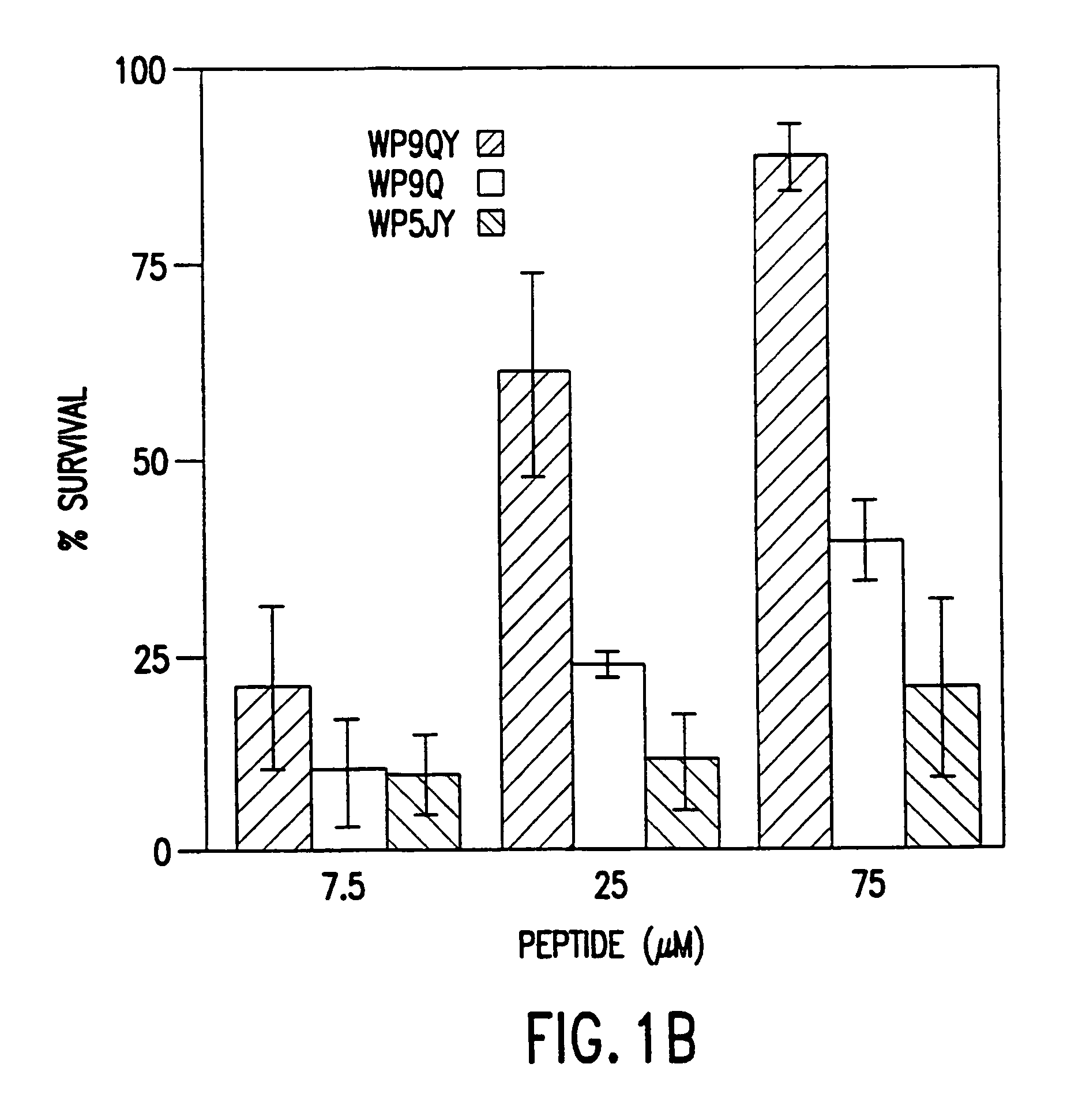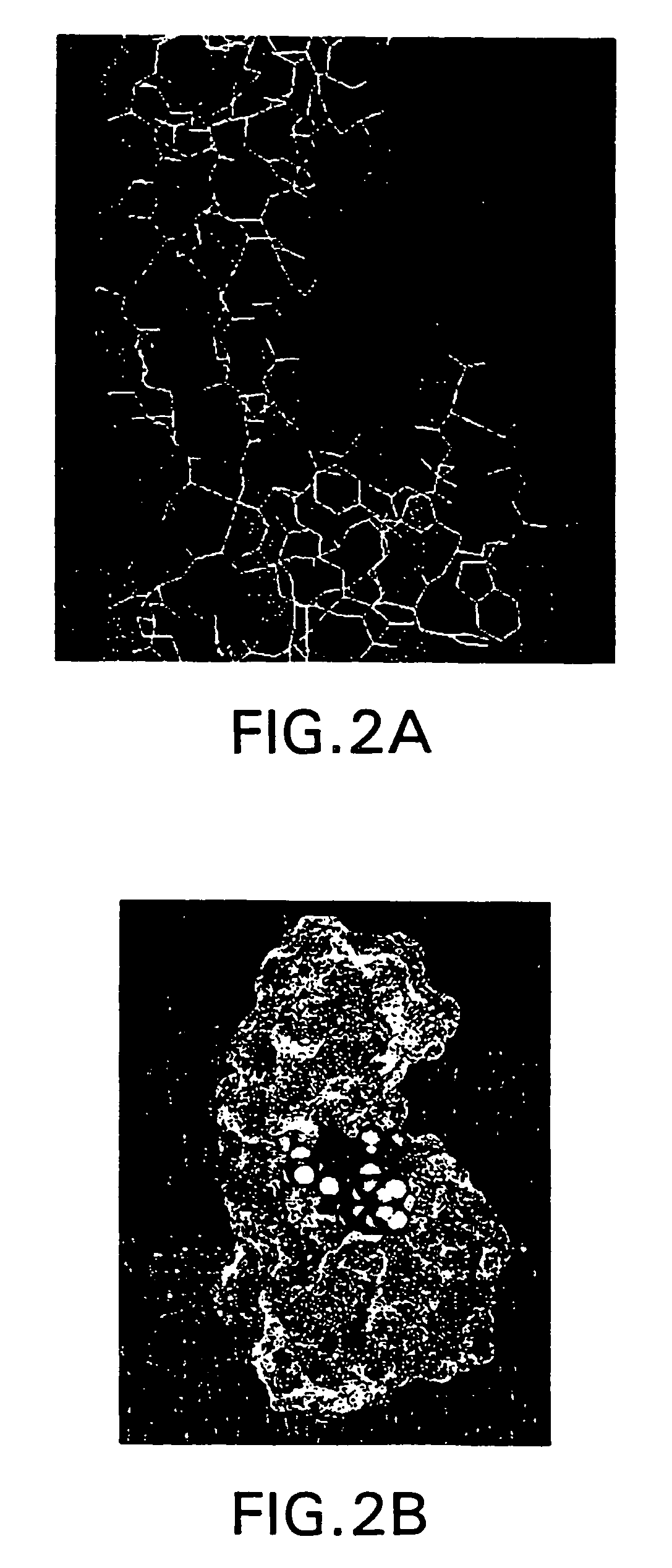Cavity induced allosteric modification of intermolecular interactions and methods of identifying compounds that effect the same
a technology of allosteric modification and intermolecular interactions, applied in the field of cavity induced allosteric modification of intermolecular interactions and methods of identifying compounds that effect the same, can solve the problems of complex natural products, stereochemical complexity, and time-consuming, and achieve the effect of modulating target-modifier interactions and improving intermolecular interactions
- Summary
- Abstract
- Description
- Claims
- Application Information
AI Technical Summary
Benefits of technology
Problems solved by technology
Method used
Image
Examples
example 1
[0048]In one embodiment of the invention, CIAM technology is used to identify compounds that inhibit interactions between tumor necrosis factor (TNF) receptor and TNFα.
[0049]Tumor necrosis factor receptor is one of the first receptors to be studied at the atomic detail both as a complex and uncomplexed polypeptide. The crystal structure of the TNF receptor both in complexed and uncomplexed forms provides a general understanding by which these receptors bind to their ligands (Banner, D. et al., 1993, Cell, 73:431-45; Eck, M. J., et al. 1989, J. Biol. Chem., 264:17595-605; and Eck, M. J., et al. 1992, J. Biol. Chem., 267:2119-22; which are each incorporated herein by reference) and associated ligand induced conformational changes. The cystine knot in the TNF receptor family consists of 42 amino acid residues with 6 cystine residues forming three inter chain disulfide bond to create the structural motif. The three dimensional structure reveals the cystine-knots repeats about 30 Å in le...
example 2
[0081]Pharmaceutical compositions are prepared using compounds of Formulas I, II and III which are commercially available from chemical suppliers such as Sigma, Aldrich, ICN, Ryan Scientific, George Uhe (Paramus, N.J.), and Biosynth (Naperville, Ill.). The pharmaceutical compositions are useful to treat individuals suffering from TNF-mediated diseases, disorders and conditions. Examples of TNF-mediated diseases, disorders and conditions include, for example, inflammatory diseases and autoimmune diseases such as rheumatoid arthritis (RA), multiple sclerosis (MS), Sjogren's syndrome, sarcoidosis, insulin dependent diabetes mellitus (IDDM), autoimmune thyroiditis, reactive arthritis, ankylosing spondylitis, scleroderma, polymyositis, dermatomyositis, psoriasis, vasculitis, Wegener's granulomatosis, Crohn's disease, ulcerative colitis, Lupus (SLE), Grave's disease, myasthenia gravis, autoimmune hemolytic anemia, autoimmune thrombocytopenia, asthma, cryoglobulinemia, primary biliary scle...
example 3
[0090]In one embodiment of the invention, CIAM technology is used to identify compounds that inhibit interactions between CD4, and MHC / antigen / TCR complexes.
[0091]By inhibiting CD4, the T cell activation associated with MHC / antigen / TCR complexes can be reduced and immune responses suppressed accordingly. The crystal structure of the CD4 complex shows distinct binding sites.
[0092]Peptidomimetics were developed and tested from surface loops of CD4. A peptidomimetic engineered from a CD4 domain inhibited T cell activation associated with MHC / antigen / TCR complexes.
[0093]Using the location of the functionally active amino acid sequence identified using the peptidomimetic as the location of a functionally critical active site, the surface of the CD4 molecule was reviewed and a large cleft was identified that could be utilized for docking a pseudo-allosteric inhibitor. The interior of the cavity was mapped and a chemical database was searched. A compound with binding energy of −34Kcal / mol ...
PUM
| Property | Measurement | Unit |
|---|---|---|
| Structure | aaaaa | aaaaa |
| Interaction | aaaaa | aaaaa |
| Thermal properties | aaaaa | aaaaa |
Abstract
Description
Claims
Application Information
 Login to View More
Login to View More - R&D
- Intellectual Property
- Life Sciences
- Materials
- Tech Scout
- Unparalleled Data Quality
- Higher Quality Content
- 60% Fewer Hallucinations
Browse by: Latest US Patents, China's latest patents, Technical Efficacy Thesaurus, Application Domain, Technology Topic, Popular Technical Reports.
© 2025 PatSnap. All rights reserved.Legal|Privacy policy|Modern Slavery Act Transparency Statement|Sitemap|About US| Contact US: help@patsnap.com



